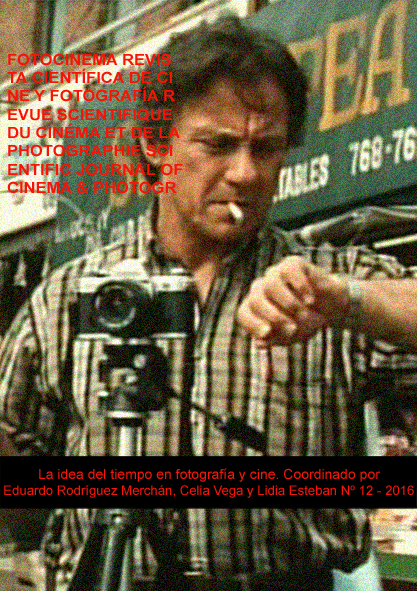La representación del dolor y la pérdida en el cine documental. El caso de Geografía del Dolor
DOI:
https://doi.org/10.24310/Fotocinema.2016.v0i12.6048Abstract
Geografía del Dolor es un proyecto documental realizado por la fotoperiodista mexicana Mónica González. Este filme retrata las consecuencias de la guerra contra el narcotráfico, a través del testimonio de familiares que buscan a sus desaparecidos o que reclaman su asesinato.
En este texto planteamos un análisis de la parte audiovisual del proyecto, desde un punto de vista hermenéutico y siguiendo la lógica del discurso retórico. El objetivo es preguntarnos sobre los recursos ético-estéticos que utiliza, y ver si existe alguna concordancia con filmes documentales clásicos, preocupados también por reflexionar sobre la representación del dolor y la pérdida.
Abstract:
Geografía del dolor is a documentary project by the Mexican photojournalist Mónica González. It portrays the consequences of the war on drugs, through the testimony of relatives looking for their missing ones or claiming his murder.
Trough this paper we propose an analysis of the audiovisual part of the project, from a hermeneutical point of view and following the logic of rhetorical discourse. The goal is to wonder about the ethical and aesthetic resources used and also to see if there is any agreement with classic documentary films, worried too, to reflect on the representation of pain and loss.
Palabras clave:
Cine documental; ética; estética; fotoperiodismo; desaparecidos; dolor y pérdida.
Keywords:
Documentary film; ethics; aesthetics; photojournalism; missing; grief and loss.Downloads
Metrics
Downloads
Published
How to Cite
Issue
Section
License
All contents published in Fotocinema Revista científica de cine y fotografía are protected under the Creative Commons Attribution-NonCommercial-ShareAlike 4.0 International (CC BY-NC-SA 4.0) license. All about this license is available in the following link: <http://creativecommons.org/licenses/by-nc-sa/4.0>
Users can copy, use, redistribute, share and exhibit publicly as long as:
- The original source and authorship of the material are cited (Journal, Publisher and URL of the work).
- It is not used for comercial purposes.
- The existence of the license and its especifications are mentioned.
There are two sets of authors’ rights: moral and property rights. Moral rights are perpetual prerogatives, unrenounceable, not-transferable, unalienable, imprescriptible and inembargable. According to authors’ rights legislation, Fotocinema. Revista científica de cine y fotografía recognizes and respects authors moral rights, as well as the ownership of property rights, which will be transferred to University of Malaga in open access. The property rights are referred to the benefits that are gained by the use or the dissemination of works. Fotocinema. Revista científica de cine y fotografía is published in an open access form and it is exclusively licenced by any means for doing or authorising distribution, dissemination, reproduction, , adaptation, translation or arrangement of works.
Authors are responsable for obtaining the necessary permission to use copyrighted images.













13.png)




